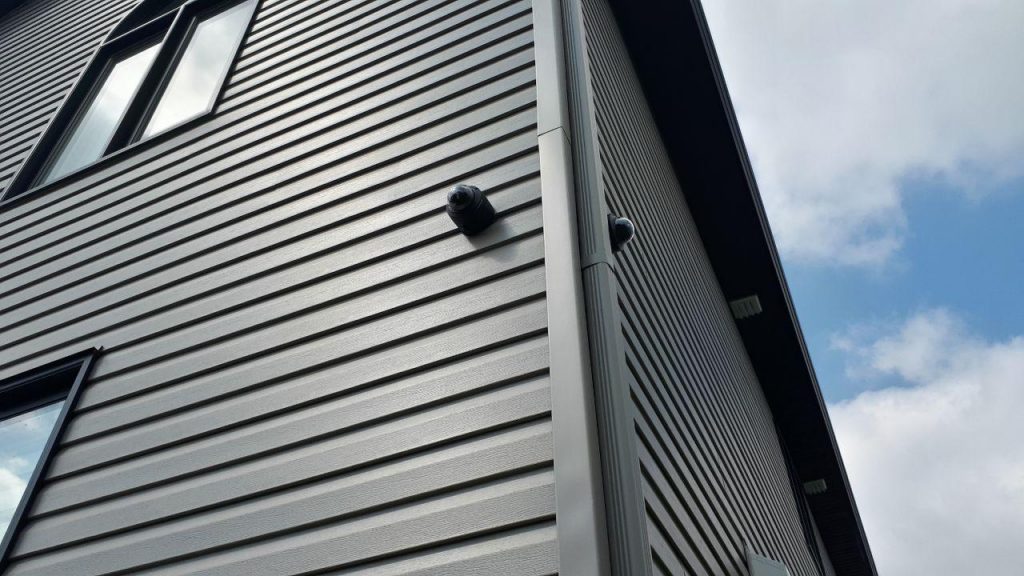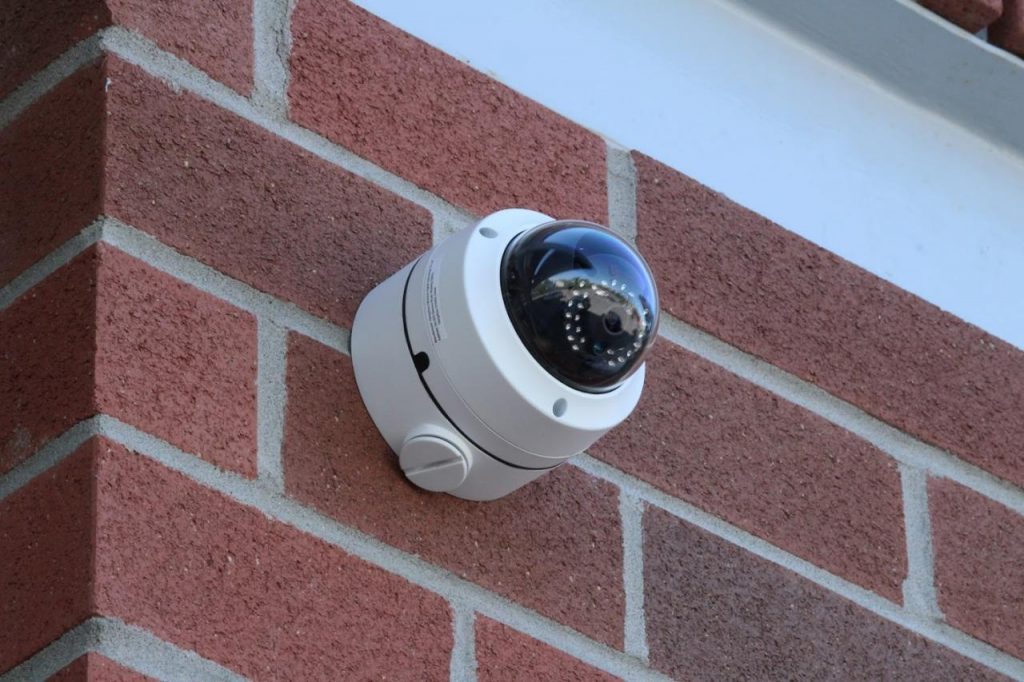Educate Yourself – Surveillance Systems
The surveillance market has expanded into the mainstream – from traditional HD-over-Analog systems to 4K quality IP cameras to doorbell cameras sold in retail stores – the amount of choices can be just as confusing as an alarm system. The purpose of this page is to educate the reader how to shop for a professional surveillance system , the difference between professional vs consumer installations, and what the future of integrated camera systems looks like.

A clean install requires a proper assessment. This install required thorough planning.
NVR/DVR
Up until 2015 or so – 99% of camera installations were a traditional NVR/DVR (Network Video Recorder / Digital Video Recorder) system. What this means is cameras are installed in their desired locations, wires are ran to an electronic unit about the size of a DVD player or VCR. Inside that box is a hard drive – where all the recordings are stored. The cameras installed often are manufactured with a hardened, secured outer housing and vandal-resistant aircraft-grade glass. On a traditional system – all recordings are stored locally, in the NVR/DVR. In order to access the system – both live and playback of recorded events – the user could either use a monitor connected to this unit directly – or use their PC/Smartphone/Tablet to view at no extra cost. This is the most simple and traditional business model for camera systems. One-time installation/labour cost – and no monthly fees.
This type of system is the most economical when it comes to long-term costs. The customer is provided with a system that will last a number of years, and the infrastructure is now in place that will outlast the camera system itself. If you’re shopping for quotes – one question you may want to ask is “What is the warranty on parts, and on labour of this surveillance system?” as those two may vary from company to company.

Weatherproof and Vandal Resistant !
SD Cards
Another type of setup used in 1 or 2 camera setups is using an SD card as an alternative to a dedicated NVR. This can really drive costs down for very simple installations – it also works almost exactly like a dedicated NVR. There are SD card slots built into many different types of IP camera systems. Although this does reduce cost – it only makes sense when deploying one or two cameras. From experience we have found full sized camera systems are best served by an NVR in regards to response times and usability of the client’s software. This is another type of local storage.
Do-It-Yourself Wireless Camera/Doorbell Solutions
Since the marriage of smartphone tech, miniaturization of electronics and better WiFi technology – the amount of choices for DIY user installed camera systems has grown exponentially. Much like security technology , we have a strong bias towards wired systems in regards to longevity, reliability and resistance to damage – however – it does not mean all user-installed systems don’t have no place as a piece of your home security. For example – we have found some doorbell cameras to be superior with notification technology upon an intended event (such as a doorbell being pressed). For our subscribers, we have installed common doorbell cameras in the retail range where we’ve wanted to rely on notifcations – but it does not go without saying we know the future of those manufacturers. Consumers should research the manufacturers track records on privacy and whether or not there are monthly fees for storing recordings for later – as well as the fact that most wireless cameras increase demand on WiFi networks more than you may expect. If all of these factors are taken into consideration and you are comfortable with what you’ve read you may want to consider something at your own residence as an effective way to monitor door traffic and visitors.
The Assessment & Quote
When calling on a professional to install an industry-grade camera system – expect the installer to want to assess the site. In the interest of an efficient install and preparation , a full inspection of wiring paths, placement of both cameras and associated equipment, location of internet equipment and client expectations should be completed before finalizing a quote. Although installers may have an approximate estimate in mind – there may be either ways of saving a client money, a requirement for different equipment , roadblocks or proper shortcuts and many other factors in the final price. Much of this leads back to properly setting client expectations but also determines the final quality of the install. In the best interest of a company’s reputation , service levels and future sales , their installer will always utilize proper waterproofing for their devices, minimize any exposed cabling as much as possible and they will utilize top-tier manufacturers with proper support and warranties. A Professional will also be able to advise you on the type of warranties available from their products – as from our experience different camera manufacturers have differing warranty/RMA policies. Much like we’ve said in our Electronic Security education page – “you still only get what you pay for in this business as in all others !!” .